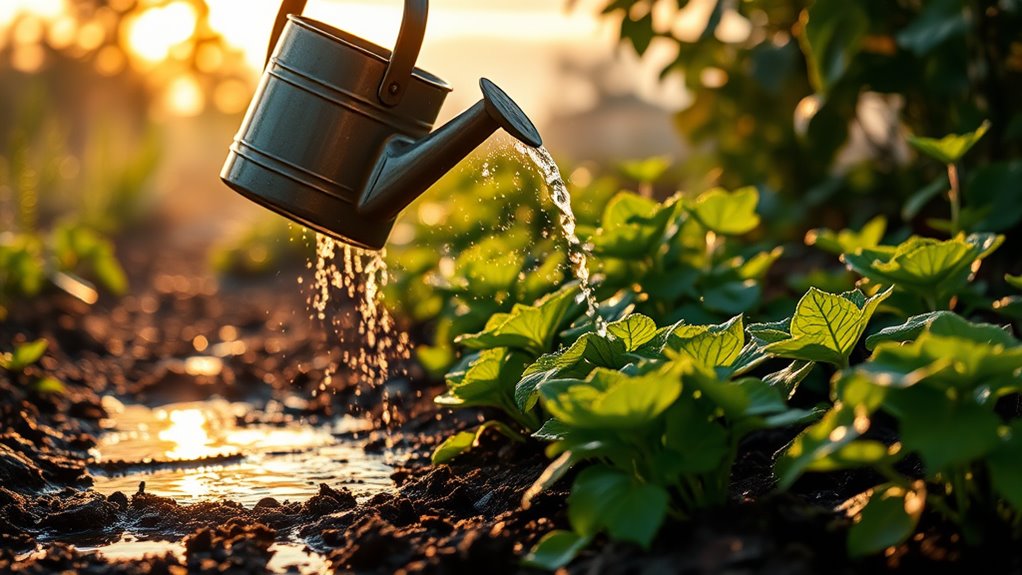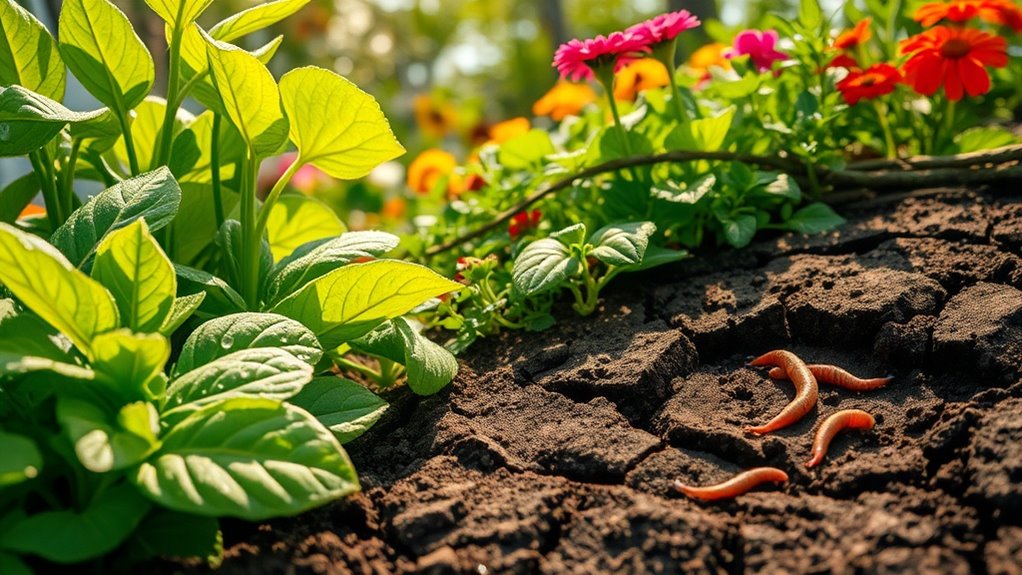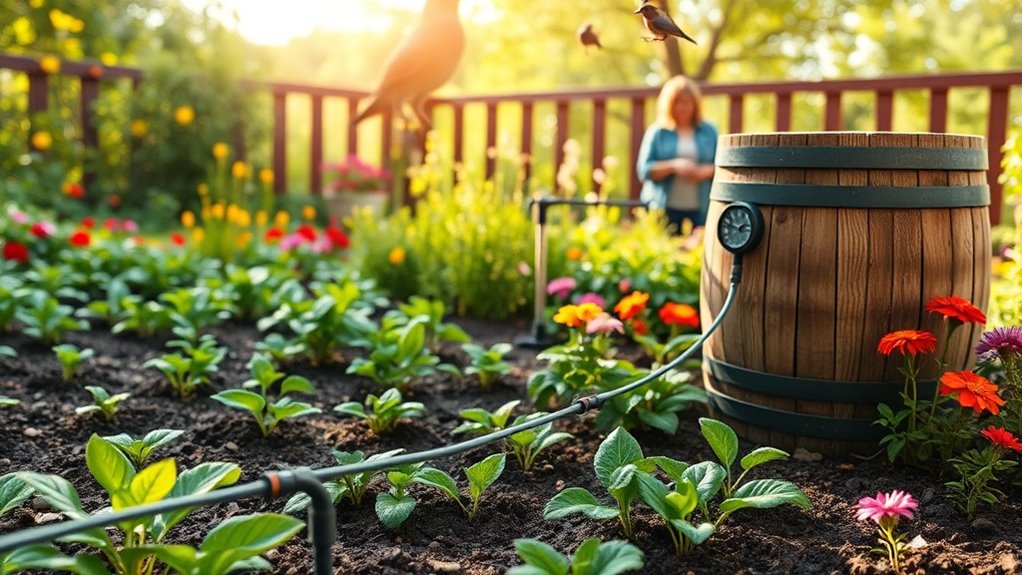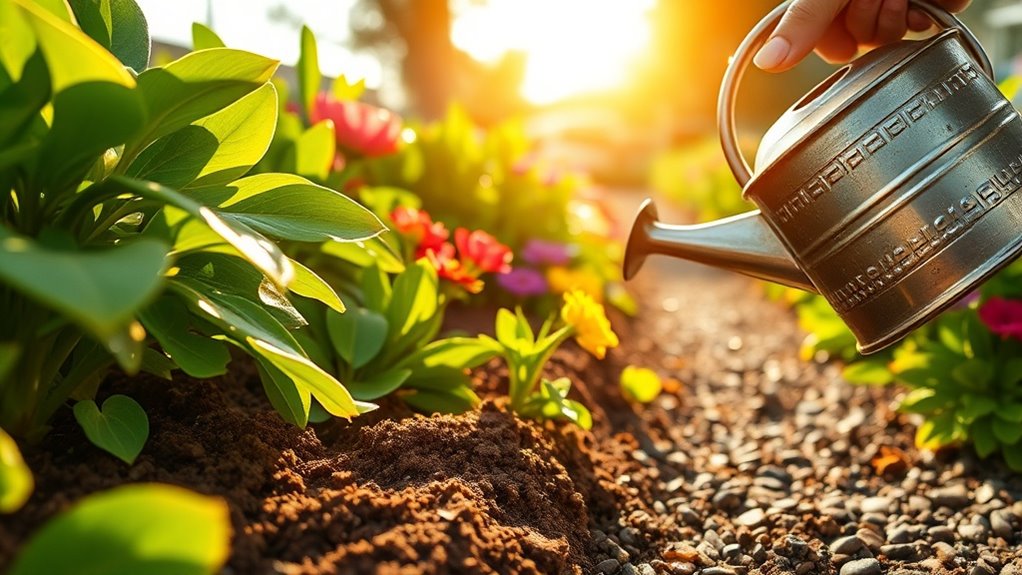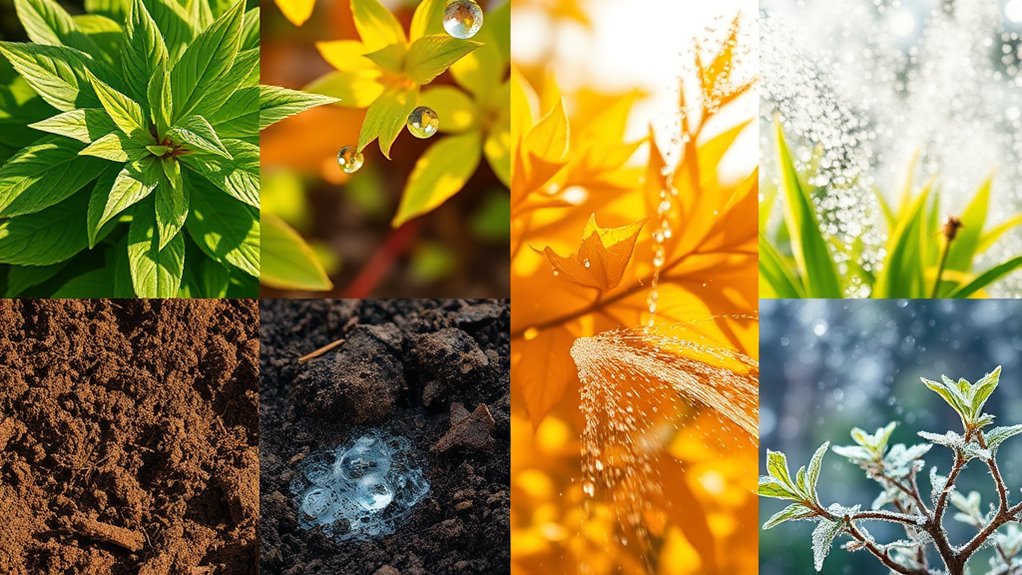Best Times to Water Your Plants for Maximum Growth
Imagine a garden thriving under the morning sun, each plant soaking up water just as the day begins. Watering your plants at this time not only enhances absorption but also minimizes evaporation and fungal risks. However, you might wonder if evening watering could be a viable option or what role soil temperature plays in this equation. Understanding these dynamics can significantly impact your garden’s health and growth.
Key Takeaways
- Water your plants early in the morning to minimize evaporation and ensure optimal absorption during cooler temperatures.
- Monitor soil temperature, as warmer soil enhances seed germination and root growth efficiency.
- Adjust watering frequency based on weather conditions, such as high temperatures and low humidity, which increase soil drying.
- Employ techniques like drip irrigation and mulching to maintain soil moisture and promote healthy plant growth.
- Be cautious with evening watering, as it can create damp conditions that lead to fungal diseases and root rot.
Early Morning Watering Benefits
Watering your plants early in the morning sets them up for success. This timing allows for optimal absorption, as temperatures are cooler and evaporation rates lower.
Your plants benefit from thorough hydration before the heat of the day, promoting robust growth and reducing stress. Additionally, morning watering minimizes fungal diseases, as moisture evaporates quickly from leaves. It’s important to note that different plants have varying watering schedule tips, which should be taken into account to ensure their specific needs are met.
To establish an effective watering schedule, consider the specific needs of your plants and local climate conditions. Aim for a consistent routine, watering deeply but less frequently.
Following these watering schedule tips will enhance your garden’s health and vitality, ensuring thriving plants.
Evening Watering Considerations
While evening watering might seem convenient after a long day, it comes with important considerations that can impact your plants’ health.
Here are three key points to keep in mind:
- Fungal Growth: Watering in the evening can create a damp environment overnight, promoting fungal diseases that thrive in moisture.
- Evaporation Rates: Cooler evening temperatures reduce evaporation, but excessive moisture can lead to root rot.
- Nutrient Absorption: Plants may not absorb water effectively at night, as photosynthesis halts, limiting their ability to utilize hydration. Additionally, overwatering can be detrimental to overall plant health, making it crucial to monitor soil moisture levels.
Consider these factors to ensure your evening watering routine supports healthy plant growth.
Importance of Soil Temperature
Soil temperature plays a crucial role in plant health, as it directly influences seed germination, root development, and nutrient availability.
When soil warms to optimal levels, seeds germinate more quickly, and roots grow more efficiently.
This warmth enhances microbial activity, promoting nutrient breakdown and absorption.
If the soil’s too cold, you’ll notice slower growth, poor nutrient uptake, and increased susceptibility to disease.
Conversely, excessively high temperatures can damage roots and reduce moisture retention.
Monitoring and adjusting your watering schedule based on soil temperature ensures your plants thrive, maximizing their growth potential and overall health. Additionally, understanding the ideal watering schedule can further enhance your garden’s performance.
Keep an eye on this critical factor!
Weather Conditions to Monitor
How can weather conditions impact your watering routine?
Understanding local weather patterns is crucial for effective plant care.
Here are three key conditions to monitor:
- Temperature: High temperatures increase evaporation rates, requiring more frequent watering to maintain soil moisture.
- Humidity: Low humidity can lead to faster drying of soil, while high humidity may reduce evaporation, affecting how much water your plants need.
- Rainfall: Monitor rainfall closely; after a significant rain, you might skip watering to prevent over-saturation, which can lead to root rot. Additionally, be aware of seasonal watering tips that can help you adjust your routine based on changing weather conditions throughout the year.
Techniques for Efficient Watering
Ever wondered what techniques can make your watering routine more efficient? Using drip irrigation saves water by delivering it directly to plant roots, reducing evaporation. Mulching retains moisture, keeping soil temperature stable. Additionally, employing a rainwater collection system maximizes resources while minimizing costs. Incorporating rainwater gardens can further enhance sustainability and improve plant health.
| Technique | Benefits | Considerations |
|---|---|---|
| Drip Irrigation | Water-efficient, precise | Initial setup cost |
| Mulching | Moisture retention, temperature | Requires regular maintenance |
| Rainwater Collection | Eco-friendly, cost-effective | Requires space for barrels |
Experiment with these methods to enhance your plant growth and conserve resources effectively.

